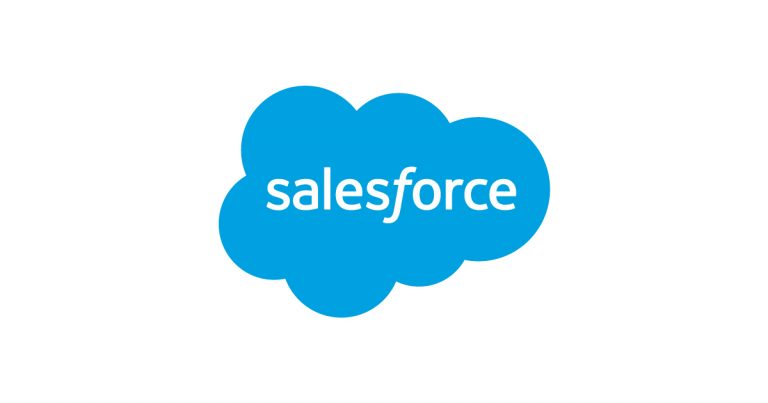As 2023 gets off to a slightly rocky start, we’re all aware that many industries face challenges in the current economic climate. While deal cycles may become longer, there is still a huge demand for new Salesforce implementations, and existing customers still need experienced Salesforce professionals to optimize and maintain their Salesforce orgs.
Over the past three years, despite the pandemic and significant changes to the working world, the pace of innovation from Salesforce has not slowed. This is commendable, but from a personal perspective, the number of new and enhanced features has been almost overwhelming.
I wonder about the capacity of new and experienced admins to pivot to working at home, staying up to date with innovation, and feeling the constant need to upskill due to new certifications and Trailhead badges.
If you’ve struggled to keep up with the pace of change, I don’t think you’re alone. Perhaps 2023 is the time to take stock, to pause, and to think about the goals that will help you advance your career in the long term.
In this article, I put forward five goals that I believe will be important for all Salesforce Admins in 2023. These goals are designed to help you stay ahead of the curve in terms of skills, certifications, and features.
1. Become a Flow Pro
Flow Builder is now the default, best practice, declarative automation tool for Salesforce Admins.
Step away from Process Builder and join the “Flow-natics” who think it’s the best thing since plushies…
With the impending retirement of other automation tools (more on that in the next section), there’s never been a better time to evaluate your Flow skills and start getting hands-on.
To be clear, Salesforce Flow is for admins and developers alike; it is a declarative automation tool. However, it acts like a developer tool ‘under the hood’ in that it is extremely powerful, and lets you achieve functionality that would have previously required code.
This means there are plenty of best practices and limits to be aware of before you start rolling out any flows!
Get started with our Complete Guide to Salesforce Flow below.
Interested in a bit more in-depth training on Salesforce Flow? Check out our Ultimate Salesforce Flow Foundation Course.
2. Plan Your Flow Migration
Following the announcement of the retirement of Workflow Rules and Process Builder, Salesforce have made great strides, including releasing a migration tool and switching off the ability to create new Workflow Rules (with the ability to create new Process Builders to be removed shortly).
Workflow Rules and Process Builder have been around for quite some time, so migrating your existing processes to Flow will be no easy task. Not only will setting up new flows take time, but there is also the need to upskill for many Salesforce professionals, who may not yet be entirely comfortable with using Flow.
Mike Bogan of Hubbl Diagnostics – a product that uncovers technical debt, risks, and opportunities within Salesforce orgs – found that only about 12% of declarative automation has been migrated to Flow [Source].
“This means there is ~19 million hours of workflow rule migration and ~5 million hours of process builder migration effort required across the entire Salesforce ecosystem.”
– Mike Bogan, Director of Product Strategy at Hubbl Diagnostics
That’s why it is so important to start planning your Flow migration and get hands-on with Flow – starting now!
3. Become a Salesforce Certified Business Analyst
The Business Analyst Certification is an ideal way to prove your skills when obtaining clear business requirements, facilitating project discovery, process mapping, and creating user stories.
Business analysis is one of the 14 key skills of a successful Salesforce Admin and can help you learn how to improve the efficiency of your business operations.
It’s clear that the role of Salesforce Business Analyst has been increasing in importance and visibility in recent times, due to the introduction of this certification in 2022.
Already a certified BA? Here are my other recommended certifications to advance your Salesforce Admin career.
4. Implement Dynamic Forms, Dynamic Actions & Dynamic Related Lists
Another of the 14 key skills of a successful Salesforce Admin is having a “designer’s mindset”. This means creating human-centered user experiences in Salesforce – in layperson’s terms, that’s creating responsive, intelligent pages that display the right information, at the right time, to the right user.
There are a plethora of features at your disposal to achieve this including:
All three of these features have undergone multiple enhancements over the past few releases, so if you haven’t been keeping an eye on them, you may not realize how advanced they have become!
Dynamic Forms
Over time, the page layout, or “Details” section in Lightning pages, can become congested with fields. These fields may well be necessary, but not all the time or to all users. The closest resolution we’ve found is to create multiple page layouts and different profiles, which is labor and config intensive.
Well, no more! With Dynamic Forms you’ll be able to:
- Place fields anywhere on the layout without needing to add them to the traditional page layout (“Details” tab).
- Use visibility rules to make fields and components appear and disappear based on criteria you choose.
- Do away with multiple page layouts.
- Improve page load times.
Dynamic Actions
Dynamic Actions will enable you to create uncluttered, intuitive, and responsive pages that display only the actions your users need to see based on criteria you specify.
Instead of scanning an endless list of actions, your users will be presented with a simple choice, relevant to their role, profile, or when a record meets certain criteria.
Which actions are available and when they appear will be configured in the Lightning App Builder instead of the traditional page layout editor, leading to reduced administrative time and effort.

Dynamic Related Lists
Related lists are great in general, right? They show you the records related to the record you are currently viewing. For example, I can see all Opportunities related to a specific Account. However, if you have a lot of records, related lists can end up becoming slightly confusing long lists… Wouldn’t it be useful if you could have a related list that only showed open Opportunities? Or one that only showed Won Opportunities? I know my users would appreciate not having to wade through records and instead be presented with the exact data they want.
Salesforce Dynamic Related Lists do exactly this and more – I can create filtered related lists, plus configure what fields are displayed, in what order, and customize what actions are available.
5. Increase Salesforce ROI
As we enter 2023, the Salesforce landscape appears less stable when compared to previous years. The downturn in the economy has meant that companies are purchasing fewer Salesforce products and licenses. That said, Salesforce is embedded in many key global businesses, and the need to continue a digital-first approach to support customer demand has not gone away.
I predict that in 2023, businesses will use Salesforce more than ever, and will be looking to Salesforce professionals to help them achieve a greater return on investment (ROI) by optimizing their existing Salesforce setup.
This is an opportunity for admins to demonstrate their overwhelming value by educating stakeholders on the features and benefits not currently in use.
Now is a great time to evaluate your setup and identify areas for improvement. Many existing features have received numerous enhancements over the past 12 months, which can be used to increase ROI. Here are just a few of my favorite suggestions from the last few releases to get you started.
Reports
One of the most empowering things you can do for your users is teach them to create their own reports and dashboards. Once they can access and analyze their own data, they’ll feel far more compelled to improve data quality.


Get started with our guide to creating reports. If you’re a little more advanced, why not start implementing some advanced reporting features?
Dashboards
In addition to reports, dashboards can provide users with an easy way to see lots of information at a glance, and even better, start making actionable decisions based on this data.
Dynamic Dashboard Gauge: A dynamic dashboard gauge can respond dynamically to changes in business conditions and goals.

Get started with our guide to creating dashboards. Lucy also has 10+ Salesforce dashboard tips and tricks that are bound to help you increase adoption and improve your ROI:
Forecasting
An often underutilized feature, forecasting in Sales Cloud has seen plenty of fantastic updates over the last few releases. If you’re not already using this feature, it’s a good time to see how it can help your business:


- Build custom forecast pages with the Lightning App Builder (Spring ‘23).

Picklist Fields
Picklist fields saw a lot of love in 2022, with multiple new features being released:
Custom Address Field
A custom address field that functions in the same fashion as the standard address field has been a much needed feature for years! This great new feature was released in Beta in Summer ‘22 and is Generally Available as of Winter ‘23.
Summary
Wondering what else to expect in 2023? Ben spoke to thought leaders from around the ecosystem to form an idea of what career and job trends Salesforce professionals might foresee.
What are your goals for 2023? Let us know in the comments!









